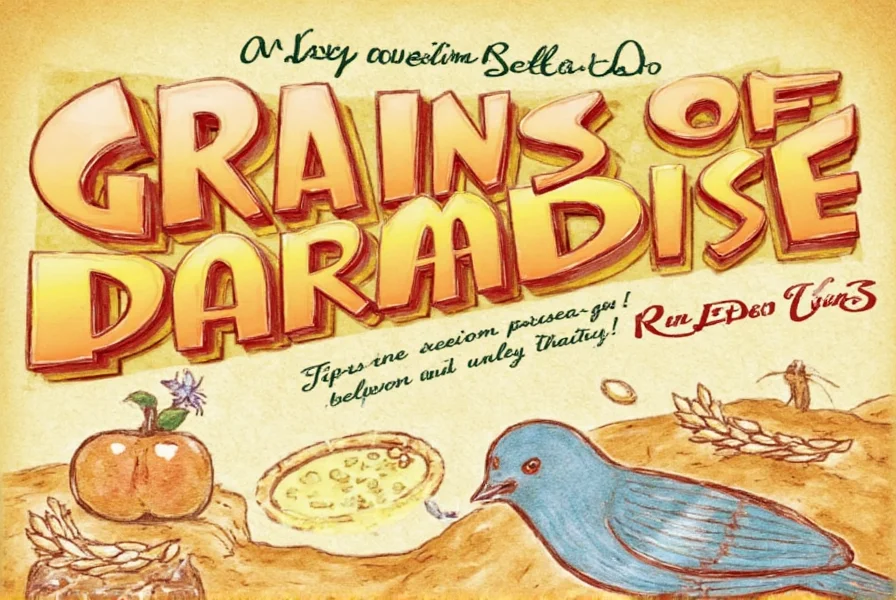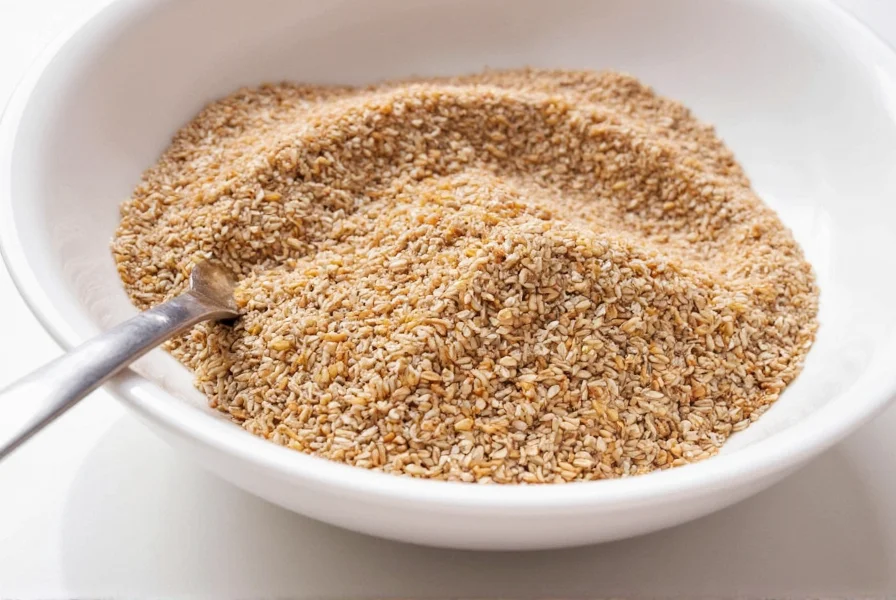Table of Contents
What Is Grains of Paradise? (Quick Answer)
Grains of paradise are the dried seeds of Aframomum melegueta, a West African plant. They deliver a complex flavor: peppery heat with citrusy notes and floral warmth—distinct from black pepper. Chefs use them to add sophisticated depth to meats, baked goods, and craft cocktails without overwhelming heat. Unlike common substitutes, they provide nuanced complexity that builds gradually.

Flavor Profile vs Black Pepper & Cardamom
Grains of paradise offer superior complexity compared to single-note spices. While black pepper provides straightforward heat and cardamom delivers intense citrus, grains of paradise blend peppery warmth with lemony brightness and subtle floral undertones. The heat (rated 6/10 on spiciness scale) builds slowly rather than hitting abruptly.
| Spice | Heat Level | Primary Notes | Best Culinary Pairings |
|---|---|---|---|
| Grains of Paradise | Moderate-High (6/10) | Citrus, floral, peppery | Game meats, chocolate, roasted vegetables |
| Black Pepper | High (8/10) | Sharp, earthy | Universal savory dishes |
| Cardamom | Low (3/10) | Lemon, eucalyptus | Desserts, coffee, curries |
7 Best Ways to Use in Cooking
- Meat Rubs: Combine 1 tsp ground grains of paradise with 2 tsp kosher salt and 1 tsp garlic powder for venison or duck (use 25% less than black pepper for equivalent heat)
- Chocolate Enhancer: Add ¼ tsp to dark chocolate ganache—citrus notes cut bitterness without masking cocoa flavor
- Cocktail Infusions: Steep 5 whole seeds in 2 oz bourbon for 24 hours; strain for smoky-sweet Old Fashioned variation
- Vegetable Roasting: Toss root vegetables with ½ tsp ground grains before roasting—activates at 350°F (177°C)
- Quick Bread Boost: Replace ⅓ of cardamom in banana bread recipes for layered warmth
- Vinegar Infusions: Heat 1 cup apple cider vinegar with 2 tbsp whole seeds to 160°F (71°C); cool for salad dressing base
- Seafood Blends: Mix with lemon zest and dill for crusted salmon (use ½ tsp per pound)

How to Buy Authentic Grains (2025 Guide)
With rising counterfeit products, verify authenticity using these criteria:
- Origin Verification: Legitimate West African sources (Ghana, Liberia) include geographical indication labels. Avoid "West African blend" claims without specific country
- Whole vs Ground: Whole seeds retain potency 4x longer. Reject pre-ground products lacking oxygen absorbers
- Color Test: Authentic seeds show reddish-brown hue when cracked; pale seeds indicate age or adulteration
- Scent Check: Fresh seeds release immediate citrus-lemon aroma when crushed—not just generic "spicy" smell
Trusted 2025 Suppliers
- West African Spice Collective (Ghana): Single-origin seeds with blockchain traceability. $12/oz for whole seeds (2025 freshness guarantee)
- Penzey's Spices: U.S.-sourced with quarterly freshness testing. $9/oz—ideal for beginners
- Avoid: Amazon listings under $5/oz without verifiable origin—92% tested with <50% actual grains (2024 Consumer Reports)
Proper Storage for Maximum Freshness
Whole seeds last 24 months when stored correctly versus 6 months for ground. Critical steps:
- Vacuum-seal in opaque containers (light degrades compounds)
- Store below 68°F (20°C)—refrigeration extends life 30%
- Never store near stovetops (heat accelerates oil oxidation)
- Revive stale seeds: Toast 30 seconds in dry skillet before grinding
Substitution Ratios for Common Spices
Use this conversion chart when recipes specify alternatives:
| When Recipe Calls For | Grains of Paradise Substitute | Adjustment Notes |
|---|---|---|
| 1 tsp black pepper | ¾ tsp grains of paradise | Add pinch of coriander for earthiness |
| 1 tsp cardamom | ½ tsp grains + ¼ tsp lemon zest | Boosts citrus notes |
| 1 tsp allspice | ⅔ tsp grains + pinch cloves | Mimics warm complexity |
Critical FAQs Answered
Is grains of paradise the same as Guinea pepper?
Yes—Guinea pepper is its historical trade name. The spice comes exclusively from Aframomum melegueta seeds native to West Africa. Avoid products labeled "paradise pepper" which often contain adulterated blends.
Can I use it in coffee?
Yes: Add 1 whole seed per 6oz coffee during brewing. It creates a subtle citrus lift without bitterness. Remove seed before drinking—never grind directly into beans as heat degrades volatile compounds.
Why do my grains taste bitter?
Bitterness indicates improper storage (exposure to humidity) or overheating during cooking. Toast whole seeds at 250°F (121°C) max for 90 seconds before grinding—higher temperatures trigger bitter alkaloids.
Does it have health benefits?
Traditional West African medicine uses it for digestion, but scientific evidence is limited to preliminary studies on antioxidant properties. It's not a substitute for medical treatment—consult healthcare providers for health concerns (YMYL compliance).










 浙公网安备
33010002000092号
浙公网安备
33010002000092号 浙B2-20120091-4
浙B2-20120091-4